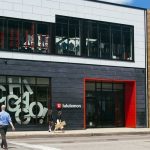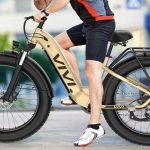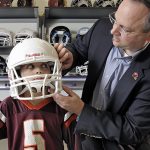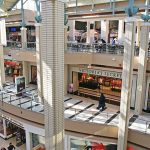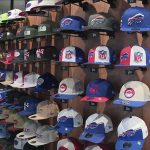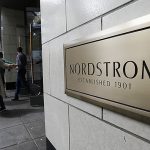Timberland fought against a lackluster footwear retail environment during the third quarter and a considerable slow-down in its U.S. boot business. But the soft market domestically was offset by increases in Timberlands international sales, particularly in Europe and Asia. In spite of the top-line difficulties and a $2.5 million restructuring charge involving Timberlands Caribbean factory, the company was able to boost Q3 earnings and deliver a healthy bottom line.
Timberlands total Wholesale revenues in the third quarter grew 3% due to strength in International sales, while total Retail revenues were down 1% due to a 3% drop in comparable store sales that was heavily impacted by weakness in the U.S. Retail business.
Timberlands efforts in the outdoor market were said to be “on the right track” and president and CEO Jeff Swartz said that he is pleased to be “recapturing Timberlands leadership position in the outdoor segment.” However, the brands core boot business has been “relatively softer in recent months.”
Swartz sees growing total business through organic brand growth, like the recent launch of the Mion brand with Martin Keen, and through acquisitions. “Were a pretty good footwear wholesaler and the question is can we leverage those skills in terms of enterprise growth that involve acquisitions,” said Schwartz. “Our eyes are open to that.”
Geographically, the 6.1% decline in total U.S. sales was driven by soft prior-year sell through and soft back-to-school boot sales this year. A 10% decline in womens casual products was also a major contributing factor. Timberland PRO and kids products were said to be performing well in the U.S. In Europe, sales were led by expansion into Scandinavia and growth in the U.K. All major footwear categories are showing positive momentum in Europe and apparel sales are up as well. Sales in the Asian region were up 10% due to strength in Hong Kong, Taiwan, and Malaysia.
Timberland experienced a slight decline in gross margin, which was primarily due to product mix in the U.S. and “moderately higher” product costs. The company expects to see higher product costs and prices of oil-based raw materials escalate. Excluding restructuring costs, operating expense only grew 1% due to international expansion efforts. Third quarter net income was $69.2 million compared with $68.6 million last year. Diluted EPS was $1.02, compared with 96 cents last year.
While third quarter sales and earnings results met analysts expectations, Timberland also said fourth quarter operating profit could decline in high-single-digits, causing Wall Street to take a chunk out of the stock last week. TBL shares were down 14.5% for the week to close at $27.49 on Friday. Operating profits for Q4 are expected to be below last years levels with potential declines in the “high single digit” range. The company also expects continued pressure on its growth through the first half of 2006 due to soft U.S. boot business and mixed results with Timberlands new spring products.
At one point in the quarterly conference call with analysts and investors, Mr. Swartz was challenged by an analyst that asked if the company was spending too much time on community relations and brand building and not enough on the product. Swartz shot back quickly, challenging the callers premise, pointing to the companys integrated strategy of “commerce and justice.”
| The Timberland Company | |||
| Third Quarter Results | |||
| in millions | 2005 | 2004 | Change |
| Total Sales | $505.9 | $493.9 | +2.4% |
| U.S. Direct | $46.6 | $50.5 | -7.7% |
| U.S. Wholesale | $220.7 | $234.3 | -5.8% |
| Intl Direct | $39.1 | $35.9 | +8.8% |
| Intl Wholesale | $199.5 | $173.2 | +15.2% |
| Total Footwear | $399.0 | $388.2 | +2.8% |
| Total App./Acc. | $101.5 | $101.4 | +0.1% |
| Gross Margins | 48.9% | 49.4% | -50 bps |
| Net Income | $69.2 | $68.6 | +0.7% |
| Diluted EPS | $1.02 | $0.96 | +6.3% |
| Inventories* | $242.6 | $183.0 | +32.6% |
| Accts Rec.* | $298.2 | $279.2 | +6.8% |
| US Retail Comps | -7.2% | 1.3% | |

